We've found 390 matches for your search. Order by
Results
-
 £50.90
£50.90IF YOU REALLY KNEW ME (Eb Horn Solo with Brass Band) - Hamlisch, Marvin - Smith, Sandy
Grade: Medium.
Estimated dispatch 7-14 working days
-
 £30.00
£30.00In the Bleak Midwinter (Eb Horn Solo with Brass Band - Score and Parts) - Bates, Jonathan
-
Estimated dispatch 7-14 working days
-
 £50.90
£50.90IN THE BLEAK MIDWINTER (Fernie) (Eb Horn Solo with Brass Band) - Holst, Gustav - Fernie, Alan
Grade: Easy/Medium.
Estimated dispatch 7-14 working days
-
 £50.90
£50.90JEANNIE (Eb Horn Solo with Brass Band) - Smith, Sandy
Grade: Easy.
Estimated dispatch 7-14 working days
-
 £37.95
£37.95JUST THE WAY YOU ARE (Flugel Horn Solo with Brass Band) - Joel, Billy - Barry, Darrol
Estimated dispatch 7-14 working days
-
 £37.95
£37.95Little Blue Boy (Horn Solo with Brass Band - Score and Parts) - Woods, Stanley
.
Estimated dispatch 7-14 working days
-
 £50.90
£50.90MAGH SEOLA (Flugel Horn Solo with Brass Band) - Fahy, Gerald - Smith, Sandy
Grade: Medium.
Estimated dispatch 7-14 working days
-
 £50.90
£50.90MAIRE MY GIRL (Eb Horn Solo with Brass Band) - Aitken, George - Smith, Sandy
Grade: Easy.
Estimated dispatch 7-14 working days
-
 £49.95
£49.95Masquerade (Horn Solo with Brass Band - Score and Parts) - Sparke, Philip
Facsimile Edition
Estimated dispatch 7-14 working days
-
 £24.95
£24.95MOUNTAIN MELODY (Tenor Horn Solo with Brass Band Set)
Estimated dispatch 7-14 working days
